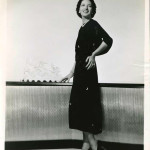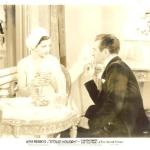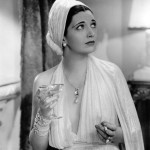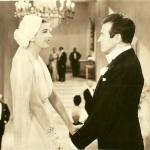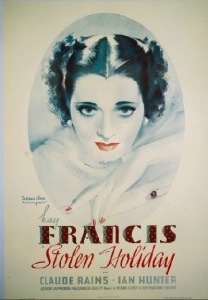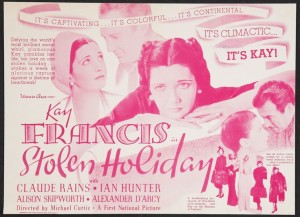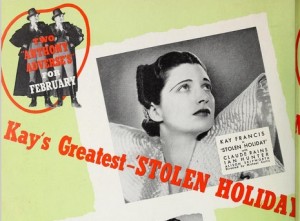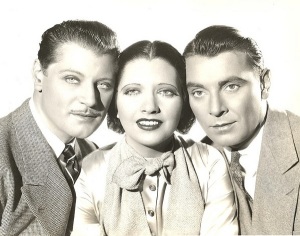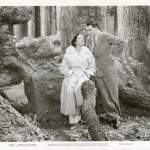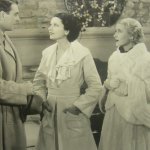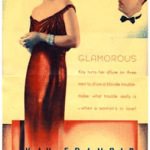Kay Francis … Vera Kowalska
Ian Hunter … Leonide Kirow
Basil Rathbone … Michael Michailow
Jane Bryan … Lisa Koslov
Donald Crisp … Presiding Judge
Mary Maguire … Hildegard
Dorothy Peterson … Mrs. Koslov
Laura Hope Crews … Stella
Robert Barrat … Prosecuting Attorney
Ben Welden … Defense attorney
Veda Ann Borg … Xenia
Directed by Joe May.
Produced by Hal B. Wallis.
Original Music by Peter Kreuder.
Cinematography by Sidney Hickox.
Film Editing by James Gibbon.
Art Direction by Anton Grot.
Costume Design by Orry-Kelly.
Makeup by Ward Hamilton.
Hairstyles by Ruby Felker.
A First National Picture.
Released August 19, 1937.
Box Office Information
Cost of Production: $513,000
Domestic Gross: $457,000
Foreign Gross: $187,000
Total Gross: $644,000
See the Box Office page for further information.
Background:
 For certain stars, there is a special film made within their career which holds the distinction of captivating more interest than any other. For many, Confession is that special film in the career of Kay Francis. It represented the ideal body of her work better than any other film; it was the ideal Kay Francis melodrama in which she proved she was more than a glamorous clothes-horse, but a serious actress capable of damn good work.
For certain stars, there is a special film made within their career which holds the distinction of captivating more interest than any other. For many, Confession is that special film in the career of Kay Francis. It represented the ideal body of her work better than any other film; it was the ideal Kay Francis melodrama in which she proved she was more than a glamorous clothes-horse, but a serious actress capable of damn good work.
And it also holds the unfortunate distinction of being her last great film…
Confession’s roots can be traced back to Willi Forst’s Mazurka (1935), which starred Pola Negri as Vera, a woman whose fall from a beautiful opera singer to decrepit cabaret attraction is wonderfully displayed in a ninety-minute running time. To many, Mazurka was the film which would revived Negri’s career as an international sensation. She had reigned as one of the most popular stars (Kay’s personal favorite, growing up) of the silent screen until her predictable fall with talking films doomed her at the box office. But her comeback in Mazurka would not make it to the screens of American theaters, with the exception of screenings on the set of Confession, much to fury of Negri, and the cast and crew of Confession.
After viewing the film over in Germany after its premiere in Berlin on December 10, 1935, Warner Brothers purchased all distribution rights of Mazurka to limit its theatrical run. Their intention was a sneaky one: buy the rights and withdraw the film from circulation to remake it as a vehicle for our top female star and profit heavily off of the revenues.
Throughout 1937, there was one star on the Warner Brothers lot who reigned supreme over all of their leading female contract stars, Kay Francis. She was the only actress at the studio to make it to the top ten popularity polls that year, was named the sixth most popular female star in the entire movie industry by Variety, and, at $5,250 dollars a week, was the highest-paid star in Hollywood. According to the movie magazines and fans, she deserved it. As a result, Confession would be produced by Hal B. Wallis and Jack Warner himself, while the budget would estimate around a costly $500,000.
Originally, Fredric March had been considered for the role of Michael Michailow, the musician who ultimately seduces Vera and brings upon her downfall. But the part went to Basil Rathbone when March proved unavailable, while a studio executive unsuccessfully petitioned for a last minute casting change with Bette Davis as Vera and Warner Baxter as Michael. This offer was overruled, and production began in early March, 1937, with Joe May slated to direct.
May proved to be the one who not only ruined Confession for its cast and crew, but made it brilliant for audiences as well. After viewing Mazurka, he decided that his Confession would be a take for take remake, even keeping a stopwatch in his hands as to time certain scenes to make sure they weren’t running over Mazurka’s time frame. Him and Kay fought furiously over the film, which may have resulted in Kay’s furious fighting with the studio executives during filming as well. The tension got so intense on the set that when Kay’s dachshund Winnie died on March 7, 1937, she took the day off for the first time in her entire movie career.
Critics, however, considered Confession to be the best work from Kay Francis in several seasons. They agreed that it was unlike anything she had previously done, which is where one does have to give May the benefit of the doubt. Yes, he did copy and paste Forst’s work onto his own canvas, but Confession is still a magnificent film regardless, as is Mazurka in a different way. Both films are classics, one just happens to be a great remake of a great film. Rarely are the remakes as good as the original, but, according to those who have seen both Confession and Mazurka, Joe May’s work is an exception to that old rule.
But the finished product didn’t justify the means for the players in Confession. Jane Bryan remembered the film’s direction as “ridiculous,” and mentioned that “there was absolutely no spontaneity.” Kay’s memory of the film wasn’t that far off, and after bitterly fighting with the studio heads for a change of pace (she was sick of, as she called it, “suffering from my art”) she was given the lead in the film adaptation of the Broadway comedy, First Lady (1937), which proved to be the flop which ended Kay’s career as a headlining attraction.
 (Above: A spread in the August 1937 issue of Picture Play.)
(Above: A spread in the August 1937 issue of Picture Play.)
(Below: From the October 1937 issue of Screenland.)
Webmaster’s Review:
Confession…the prime example of the Kay Francis melodrama. The film opens up with Lisa giving her goodbyes to her mother, who is about to leave town for a few days. Accompanied by Hildegarde, a girlfriend, Lisa notices a peculiar older man watching her from a distance. He’s been following the girls, and sends them tickets to attend a concert for pianist Michael Michailow. What the girls don’t realize is that the man watching them is Michael Michailow himself.
At the concert, Lisa is given a note from a gentlemen which has been written by Michael. This note asks her to meet him backstage, where after he insists on going out with her for dinner. She refuses, especially since Hildegarde must return home for curfew.
A few days later, Michael shows up as the instructor of Lisa’s music lessons. Alone, they share an intimate kiss which nearly knocks Lisa off of her feet.
When her mother returns home soon after, Lisa is surprised by the gift her mother brought home for her. While she is unwrapping the gift, her mother receives word that there is a visitor at the door. Anxious to express her gratitude to her mother, Lisa gives her a quick hug before her mother rushes back to discuss an important issue with the woman who came to the door.
Michael calls upon Lisa that very night to ask her to accompany him to dinner. They go to a cheap cabaret, the kind of place where the alcohol is cheap, and the entertainment is second-rate, but the audience howls anyway.
Vera Kowalska, a heavily made-up singer, takes the stage and begins to sing “One Hour of Romance.”
Walking through the audience, sipping drinks and putting little effort into her performance, Vera spots Michael and Lisa in the far corner of the cabaret, and faints into the audience. While she is brought backstage to recover, Michael hurries Lisa up to get them out of the club immediately.
Running up the stairs, Michael and Lisa pause at the top when they hear a scream.
“Michael Michailow!” Vera screams.
He turns his back, and continues to rush Lisa and himself on, until bullets are fired, and Michael tumbles down the stairs, landing at Vera’s feet.
She drops the gun right next to his body.
At Vera’s trial, Lisa is called to testify. She recites everything that had happened that evening, and returns to her seat with an obvious “what the hell was I thinking going out with this creep…” looming in the back of her head.
Now it’s Vera’s turn to talk, but she refuses. “What do you all want of me?” she bitterly asks. “I killed him; sentence me.” Her unwillingness to talk is ended when a man bursts into the courtroom with a suitcase in his hand. Suddenly, Vera agrees to testify, but only if the courtroom is cleared of all spectators. The judge agrees, and the room is emptied.
It is then when Vera begins to tell her story…
A flashback to Warsaw, circa 1912, follows. Vera is on the stage performing “Mazurka,” in a first-rate opera house. As the lavish production finishes, she takes the stage to accept her standing ovation, while the conductor, Michael Michailow, makes a personal gesture of gratitude regarding her triumph.
Backstage, in Vera’s dressing room, Michael enters and begins to try to manipulate Vera. She is tired of being an opera star, and is ready to settle down with Leonide Kirow, her future husband whom Michael deems a “stolid soldier.” Michael tries to change her mind, but it’s too late. Leonide enters, Michael leaves, the two embrace each other.
After marriage and a child, Leonide is called off for duty in the First World War. Because of this, Vera becomes most concerned with their daughter’s well-being. She makes every effort to ensure that her daughter is protected, calling upon a doctor for the silliest of problems.
It is because of all the stress she is brining upon herself that her doctor advises her to go out and leave the baby home, at least for one night. Have fun. Relax. Forget about all of your responsibilities for one night.
Unfortunately, it is this advise which brings upon Vera’s fall…
Enjoying drinks and laughs with old friends, Vera accompanies her friends back to Michael’s home, where the party continues until the very early hours of the next morning. As he is accompanying a drunk Vera, however, Michael sees a sexual opportunity he could possibly take advantage of. The two go upstairs to Michael’s room, and engage in “One Hour of Romance.”
The next morning, Vera wakes up on Michael’s bed (the hysterical part of this is, she is completely gowned as if not one piece of clothing ever came off). She rushes home and throws herself into a scalding tub to wash off.
Soon after this Leonide returns home. Vera is resistant to him, and he automatically suspects his injury has caused her not to love him (he lost an arm during battle). She insists this isn’t the problem, and when she gets another letter from Michael, she leaves the house immediately.
Vera has not been answering one of his many letter, and an irritated Michael demands and answer.
At Michael’s house, Vera tells him to back off. That she didn’t come for a “stupid rendezvous” with him. They discuss, bitterly, what happened, and what Vera doesn’t know is that Leonide has followed her to Michael’s, and now knows everything that happened.
Leonide divorces Vera, taking their daughter far away with him, and even going as far as to change his name. Unable to find employment, Vera is forced into a disgraced lifestyle…wandering the streets, working in cheap cabarets to make some spare dimes to barely feed herself.
She has reached rock bottom.
One day, Vera manages to track the home down where Leonide moved himself, their daughter, and his new wife who has come to raise Vera’s daughter as her own. Vera hears that Leonide has died when she arrives at the door, but catches a brief glimpse of her daughter, Lisa, when she runs to thank her mother for the beautiful gift she purchased for Lisa while she was away. Vera’s eyes briefly tear up, looking at how much Lisa has matured, and how much she has missed out on forming a solid bond with her.
When Leonide’s wife returns to Vera, she explains that Leonide insisted that Lisa be brought up with the idea that she was her real mother. Vera decides that maybe this was better, and leaves the house with the idea in her head that, if she dies, at least she can say she knows her daughter is happy.
Then, “that very night,” Vera goes on the stage at the cheap cabaret to perform her act. She spots Michael and Lisa in the back corner, and decides to save Lisa before Michael can seduce her as well.
It was out of a mother’s determination to save her child that Vera shot Michael, and her sentence is minimal. When the public is brought back in, they hear that Vera is sentenced to only three years, “the time of which the accused has been under arrest is to be subtracted from her sentence.” He then goes to discuss—without telling any information about Vera’s real reason to kill Michael—that Michael’s murder was justifiable.
Vera can now rest knowing that Lisa will never know she is her real mother.
Leaving the courtroom, Lisa gives her “mother” a hug, only to go and approach Vera after.
“Madame Kowalska,” she calls out. Vera unemotionally turns around, only to come to quick attention when she realizes its Lisa. “I just wanted to tell you that…I just had to tell you…that I want to wish you the best of everything.” She extends her hand for a handshake, only to get a cold vibe from Vera and gently pull it back towards herself.
A ghost image of Vera appears—and a mother reaches out to give her daughter the one thing she would never dare to attempt, an embrace of her daughter, showing the true love from her true mother.
“Thank you, Miss Lisa,” Vera solemnly says, turning her back and walking on to serve out her sentence.
Confession is Kay Francis’ film. Though she doesn’t appear until about the twenty-minute mark, she keeps herself the center of attention throughout the rest of the movie. The introduction gives Jane Bryan a great chance to prove her naturalness to her acting, and perhaps this was a move from Warner Brothers to not only allow Francis to be beautifully represented, but Bryan as well.
Jane Bryan was the first of the Teresa Wright, Joan Leslie generation of young, fresh actresses of the late 1930s/early 1940s. However, she was the best, and Confession is one of the greatest examples of her work. Unfortunately, her career didn’t last long. She left the screen for a successful marriage which drew her attention elsewhere.
This is another deceiving part for Basil Rathbone. His typecasting in such parts rivaled Kay’s typecasting in her vamp roles in films such as A Notorious Affair (1930), in which the tables were turned, and the plot had Kay seducing Rathbone. Still, he is an interesting aspect to the film, and I can’t really picture Fredric March, the original contender for the role of Michael, doing better than he.
Rathbone had such an experience in these types of parts; he was one of the finest character actors of his generation. In the opening scenes, he provides a distant, eerie touch to the film which brings out the dismal realities of post-war Europe, largely destroyed by the economic slow-down from the expenses, worsened by the Treaty of Versailles.
Ian Hunter again plays his ideal role. He is an honorable soldier, but he gets some deserved attention in the way he reacts to finding out Vera’s affair with Michael. It is then, in that brief moment as she chases after him, when Leonide finally becomes alive. During most of the film, he really is just a “stolid soldier.”
We first spot Kay in the cabaret scenes. She wears gaunt make-up, exaggerated around her intense eyes, which makes her look like she’s about to finally have a nervous breakdown. This adds to the realism of her reaction to the overwhelming shock she gets when she spots Lisa dining with Michael.
As the glamorous opera star, Kay Francis is what we expect her to be: glamorous, honorable, charming, and slightly naïve, though considerably intelligent. Her hairstyle is a little distracting, though. Well, maybe not so much the overall hairstyle as the upside-down heart formed in her bangs. It’s distracting, and I couldn’t keep my eyes from staring at it.
She’s beautiful when Hunter comes to greet her backstage after her performance of “Mazurka.” I don’t have any knowledge about “Mazurka,” but Kay and the rest of the people on the stage make the finale seem so good that I would have liked to see a performance of that, too.
Of course her singing is dubbed, though.
Her greatest scene is also her last. I will always consider that long walk down the hall one of the best movie finales ever achieved. The score—a character itself throughout the film—adds a considerable amount of drama to this.
Confession turned out to be Kay’s last real great movie of her career, and definitely the final one which best represented her as a screen star. Though she and the cast had a number of problems with Joe May’s direction throughout filming, a behind the scenes struggle does not come across in this film at all.
It’s an unappreciated classic, worthy of a prestigious DVD release.
Vintage Reviews:
No matter to what clime the Warner cameras travel in search of Old World décor to piece out a production schedule that can’t, obviously, be composed entirely of important matters like “The Life of Emile Zola,” Miss Kay Francis keeps turning up, like the black queen in the fortune teller’s cards, presaging ill fortunate, misunderstanding, heartbreak and a charmingly slurred consonant or so.
The Strand’s current “Confession,” is, however, the first film that has discovered Miss Francis performing the neatest of tricks, darkly brooding in a blond peruke. In “Confession” Miss Francis is an operatic contralto, who, reduced to torch singing in Continental cafes by cruel fortune, kills that eternal satyr, Basil Rathbone (the man whose machinations had separated her years before from her husband and girl baby), when she discovers him attempting to seduce her now grown daughter.
The story is not particularly well conceived, its tragedy growing out of a situation that a good, plain heart-to-heart talk might have cleared up in a trice, even in prissy pre-war Poland.
The leading characters are stuck off from familiar matrices: Ian Hunter, the honor-bright husband; Basil Rathbone, a most unmitigated scoundrel, and Miss Francis, a heroine who seems able to find words for every situation except the one that brings the whole affair on. The refreshing note is the presence in the cast of Miss Jane Bryan, one of the most promising of the Warner stock players, who seems to provide a concisely sincere performance no matter how artificial the rest of the piece may be.
Written by John T. McManus. Published on August 19, 1937 in the New York Times.
From the October 1937 issue of Screenland:
Lobby cards & Film Posters:
Lobby Cards:
Posters:
Misc. Images














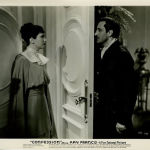








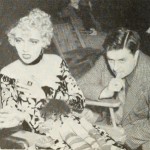
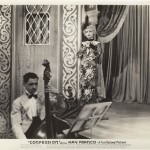







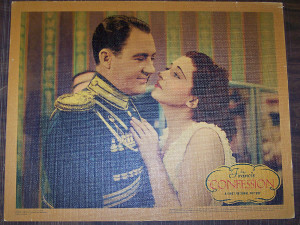

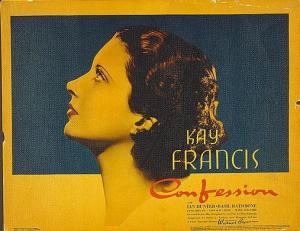


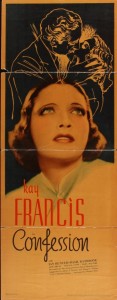



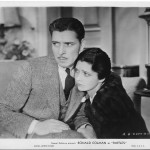



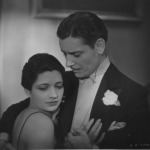


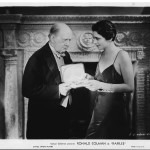


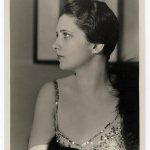


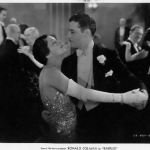


















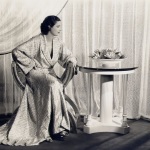

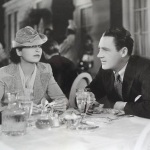






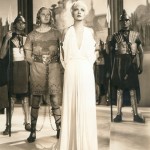









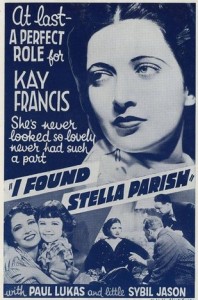








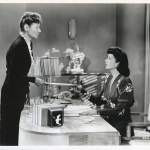

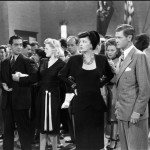












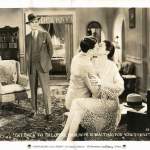




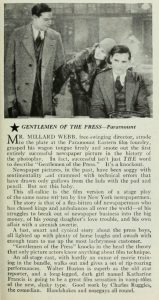

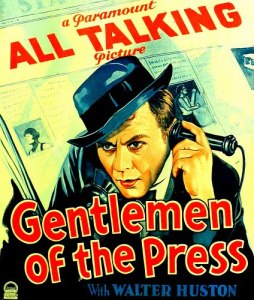



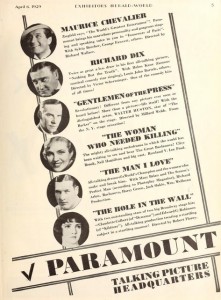








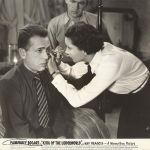
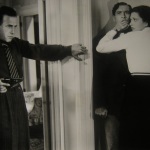





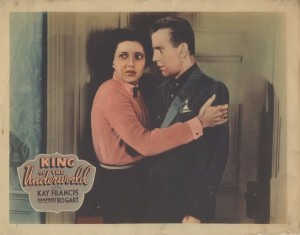
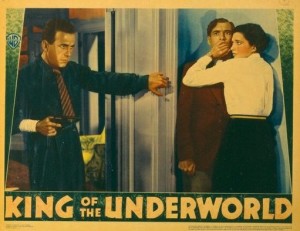

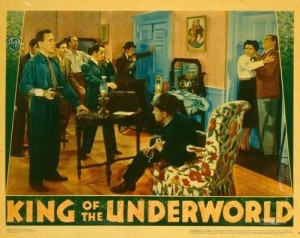
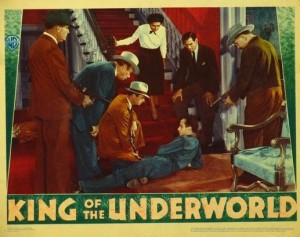








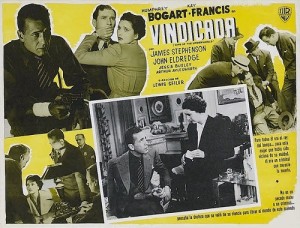



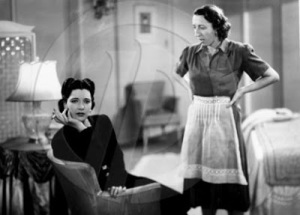






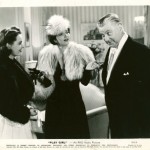





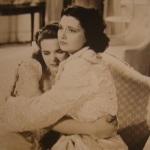

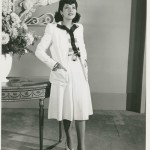



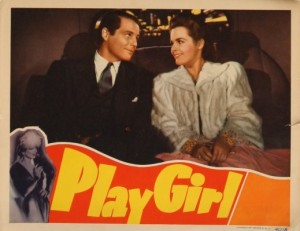


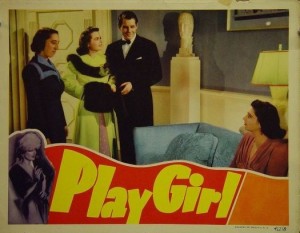



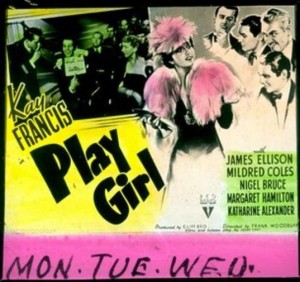




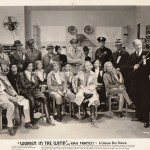




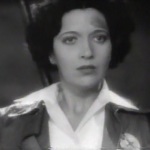
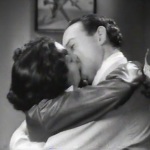


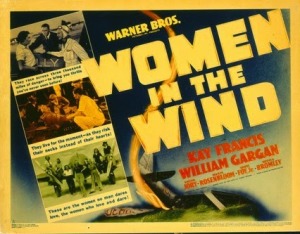

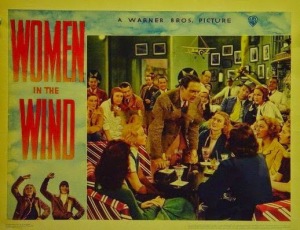


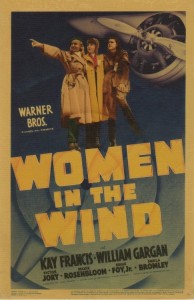
 Cast:
Cast:

